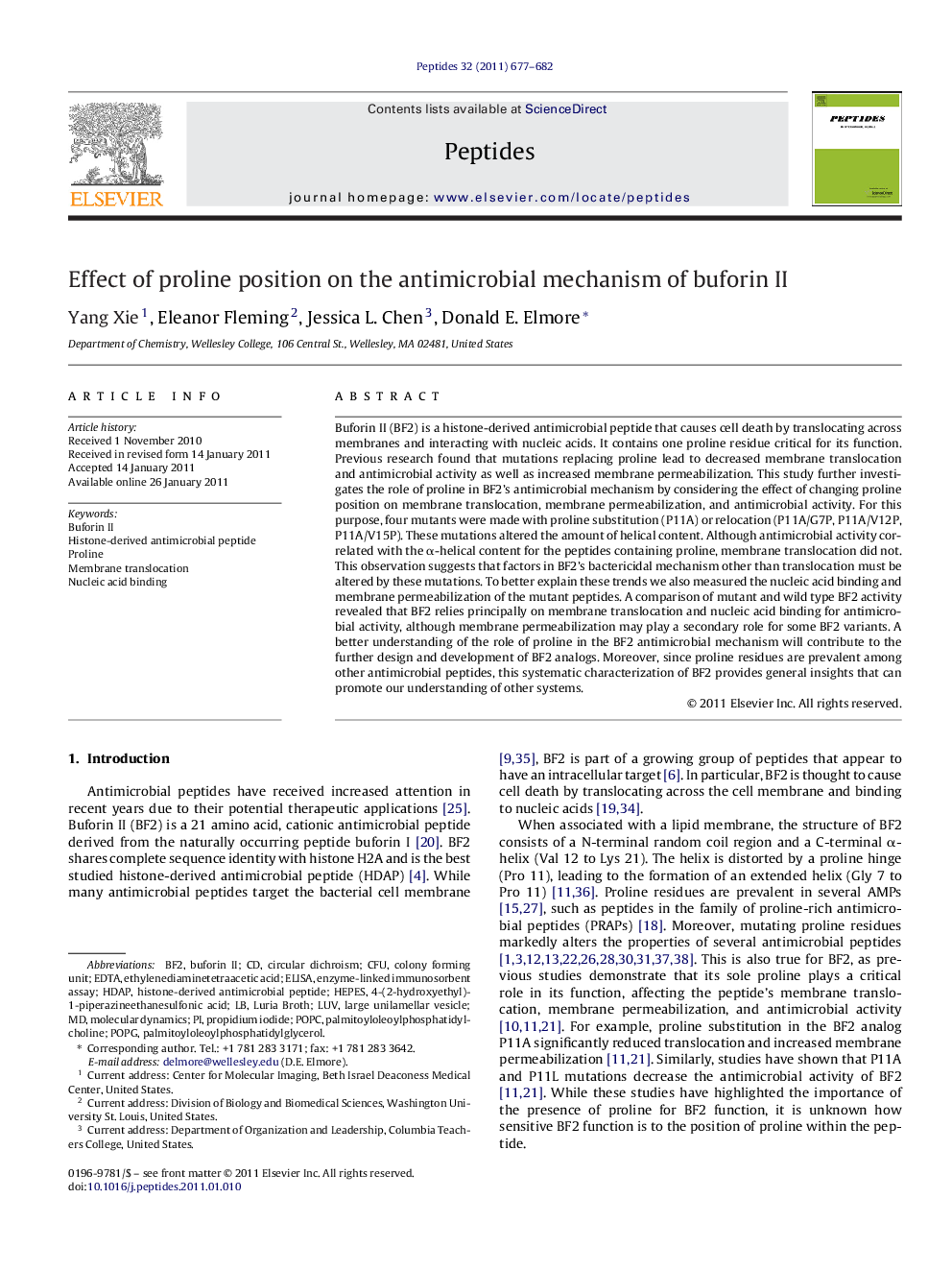| Article ID | Journal | Published Year | Pages | File Type |
|---|---|---|---|---|
| 2006648 | Peptides | 2011 | 6 Pages |
Buforin II (BF2) is a histone-derived antimicrobial peptide that causes cell death by translocating across membranes and interacting with nucleic acids. It contains one proline residue critical for its function. Previous research found that mutations replacing proline lead to decreased membrane translocation and antimicrobial activity as well as increased membrane permeabilization. This study further investigates the role of proline in BF2's antimicrobial mechanism by considering the effect of changing proline position on membrane translocation, membrane permeabilization, and antimicrobial activity. For this purpose, four mutants were made with proline substitution (P11A) or relocation (P11A/G7P, P11A/V12P, P11A/V15P). These mutations altered the amount of helical content. Although antimicrobial activity correlated with the α-helical content for the peptides containing proline, membrane translocation did not. This observation suggests that factors in BF2's bactericidal mechanism other than translocation must be altered by these mutations. To better explain these trends we also measured the nucleic acid binding and membrane permeabilization of the mutant peptides. A comparison of mutant and wild type BF2 activity revealed that BF2 relies principally on membrane translocation and nucleic acid binding for antimicrobial activity, although membrane permeabilization may play a secondary role for some BF2 variants. A better understanding of the role of proline in the BF2 antimicrobial mechanism will contribute to the further design and development of BF2 analogs. Moreover, since proline residues are prevalent among other antimicrobial peptides, this systematic characterization of BF2 provides general insights that can promote our understanding of other systems.
Research highlights► First study to consider importance of proline position in buforin II mechanism. ► Sole proline is in ideal position for buforin II membrane translocation. ► Sole proline is in ideal position for bufoirn II antimicrobial activity. ► Results emphasize interplay of translocation and DNA binding in buforin II mechanism. ► Results highlight importance of considering proline position in other peptides.
